Where does a person, place or thing begin and end? Textile artist Archana Pathak is interested in the evolving nature of physical and psychological boundaries.
Working with found memory artefacts, Archana explores the transient nature of identity and the beauty that lies within our ever-changing world.
Maps are of special interest to her, especially since her creative approach is rooted in both Indian and British cultures. Political and social borders waver and shift over time, just as the climate and seasons change the ground we walk on and the nature that surrounds us.
Archana seeks to capture all of this morphing fluidity through abstraction and colour.
Perhaps the most unique aspect of Archana’s textile art is the threads she creates to use across her work. They aren’t traditional threads made from spun fibres. Instead, she cuts very fine strips of printed fabrics narrow enough to fit through the eye of a needle.
Can you imagine doing this? We couldn’t either, so we invited her to tell us more about her remarkable thread making process, a signature technique she’s developed over time.
We invite you to step into Archana’s world, where change is indeed a good thing.
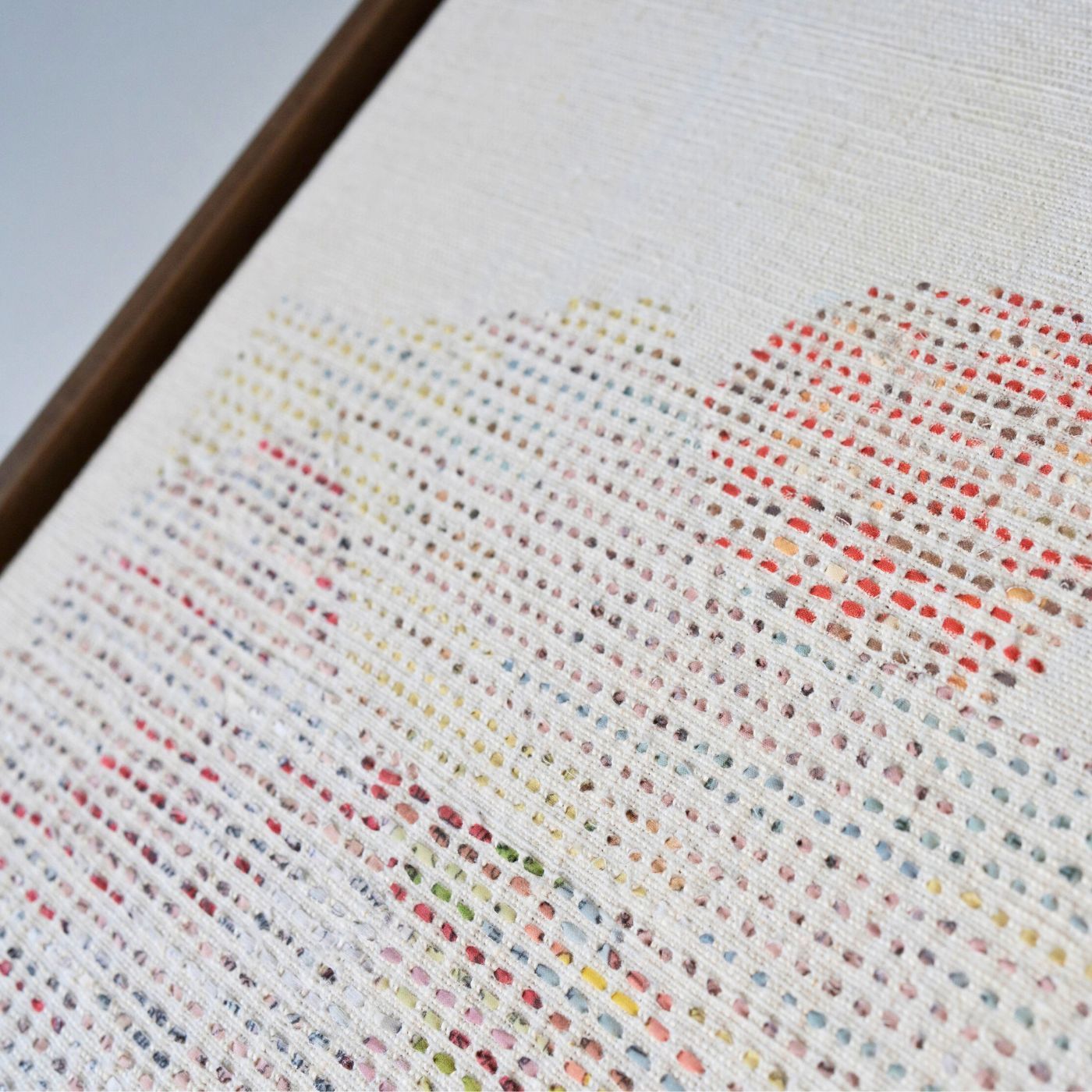
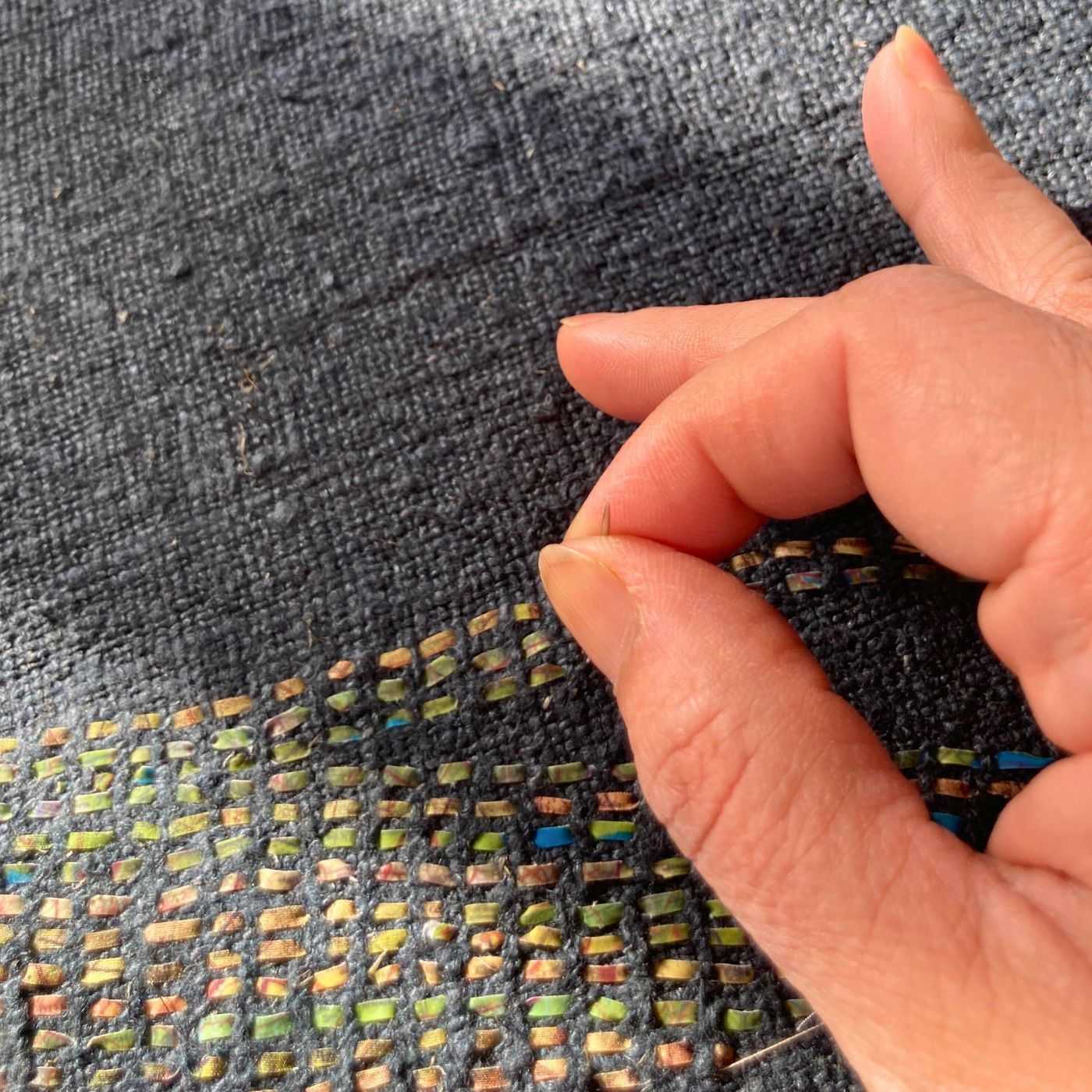
Grandmother’s influence
Growing up in India, I was surrounded with beautiful textiles. My first memory of working with them was making a cloth doll with my maternal grandmother. She made kantha quilts known as gudri that use old textiles from home. She also made small grass baskets, and I have one in my studio.
Visits to my grandmother’s home are some of my most treasured childhood memories. Everything was handmade, and it was a beautiful zero-waste sustainable home.
My mum knitted jumpers for us and was prolific in creating beautiful crochet items for the home. Her sarees were also mesmerising, especially the handloom cotton ones, which she starched at home. She always needed help taming the pleats after draping, and I loved helping her and seeing her transform when wearing those sarees.
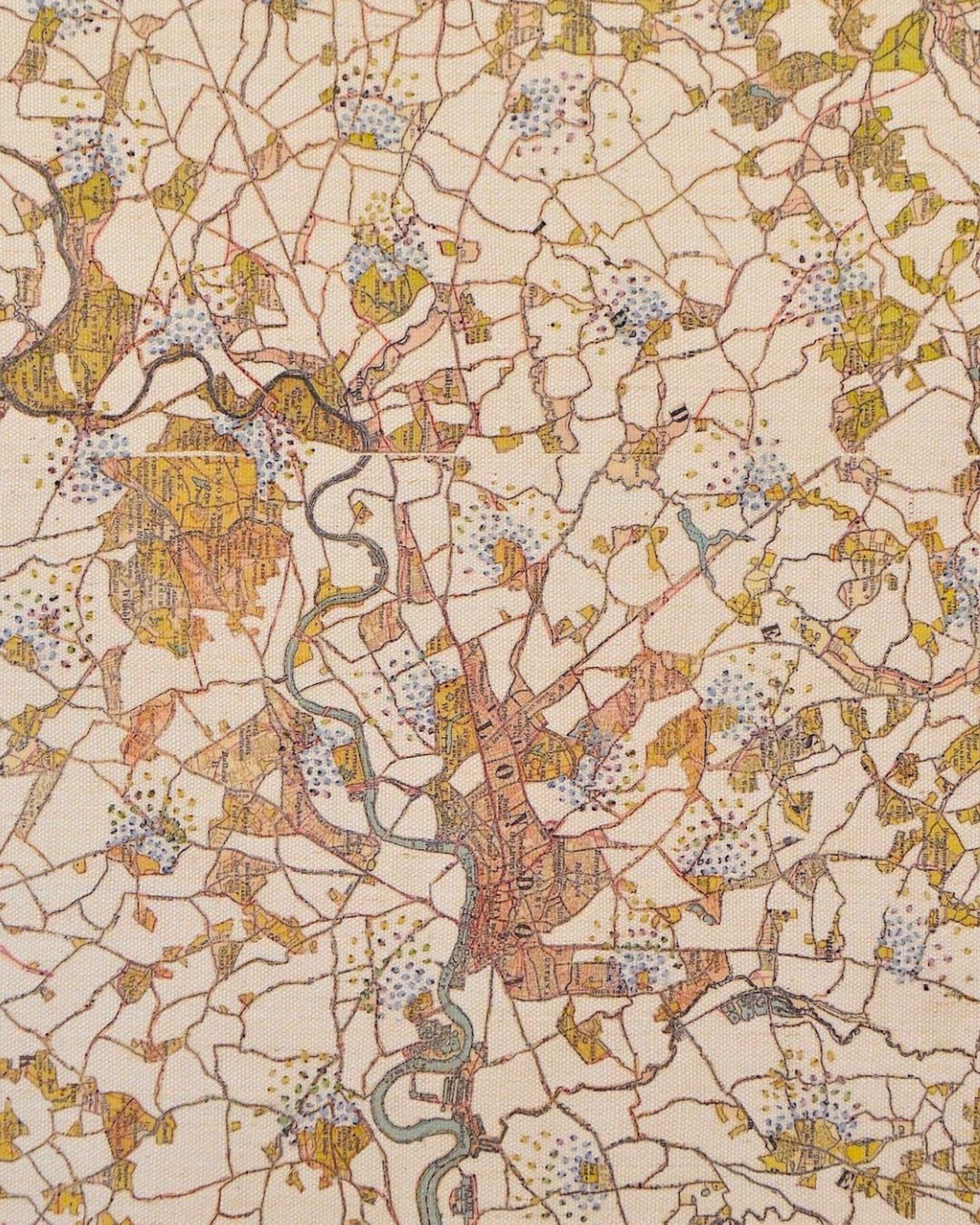
Multicultural studies
I studied textiles in India and the UK, with a significant time gap between the two. I first earned a master’s degree in textiles from India’s National Institute of Design in 2003. I then earned a masters in sustainable textile design from Chelsea College of Arts (University of the Arts London) in 2014.
Both experiences set me on a path to becoming an artist using textiles and stitch as my medium. And my Indian heritage opened me to the immense skills required for India’s traditional handcrafts and textiles.
After graduating from Chelsea, I moved into fine art textiles. I eventually chose a path away from commercial design to pursue my own creative ideas and approach. That move toward art was a huge breakthrough. It changed everything in my work and life.
I have explored identity and its transience for the past seven years. I’ve wanted to create art within a space of no influence, without thinking of where I was coming from or heading to. I detest the need to find identity in my work and put it into a box.
“My practice has a very organic evolution that’s guided by the process of making – one work leads to another.”
Archana Pathak, Textile artist
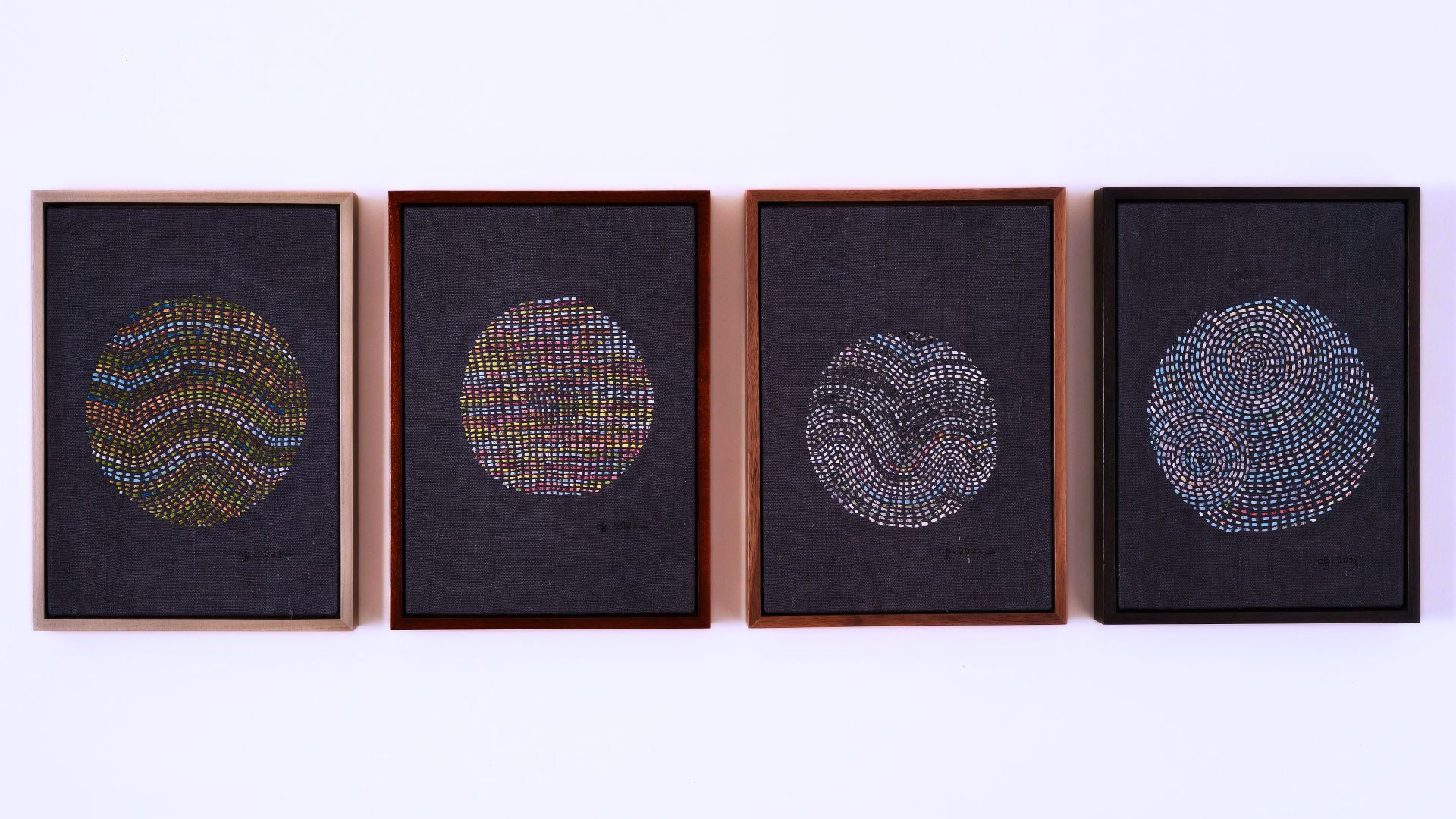
Khadi & kantha
The Indian textile traditions of khadi and kantha quilts significantly influence me. The soul, history and politics of each practice have deeply inspired my work on a very subconscious level.
Khadi, derived from the term khaddar, is a hand-spun and hand-woven cotton cloth. It became a symbol of Gandhi’s freedom fight for an independent India. He used khadi to connect the Indian people to their roots, to the rural villages and to the dignity of labour. I am deeply moved by his use of a humble textile in his very big quest.
Kantha quilts, which originated in Bengal, are equally soulful, humble and sustainable. They are made by women, mostly from old used sarees. The saree fabrics are layered and hand stitched using a simple running stitch. The process not only combines layers of fabric but also layers of memories, stories and histories.
Kantha meant so much to me that I carried a scrap with me from India when I moved to the UK. I kept the scrap close to me throughout my education, as well as my studio practice.
“I wish and dream that the essence of these traditional Indian textiles seep into my own art practice.”
Archana Pathak, Textile artist

Map lover
I collect and work with found memory artefacts, such as old photographs, letters, diaries and maps. Often those artefacts are old maps – they bring forth the evolving nature of boundaries, both physical and psychological.
Unfortunately, I am not a map reader. But I am deeply moved by old maps on a very visceral level.
Since I function from the space of feelings and intuitions, I look at maps as very fluid drawings of places with blurring boundaries and borders. Maps are a beautiful confluence of things merging into each other to become a new whole.
I began collecting memory artefacts in 2014 when pursuing my masters, as I was interested in memories. In my early years, I collected old photographs, letters, postcards, diaries and maps. But slowly my collecting focused mostly on maps. At first, I used them to explore places, but that quickly evolved into investigating identity and its transience.
That shift started in 2017 when I got my hands on an old map of London featuring prominent green spaces. I wanted to carve out everything but those green spaces and the River Thames, as that’s how I saw the city.
When I returned to the finished work the next morning, it revealed itself to me as a ‘tree of life’.
That was my ‘aha moment’. I later made additional versions of a tree of life that conveyed the transience of identity and asked the potent question, ‘Where are you really from?’.
“The ways in which I deconstruct and reuse maps results in personal maps that are constantly evolving.”
Archana Pathak, Textile artist
Through meditation and my disillusionment with the current state of the world, I now find myself moving from the transience of identity to the beauty of transience. It’s my search for connection both inward and outward, and I’m looking forward to seeing where it takes me.
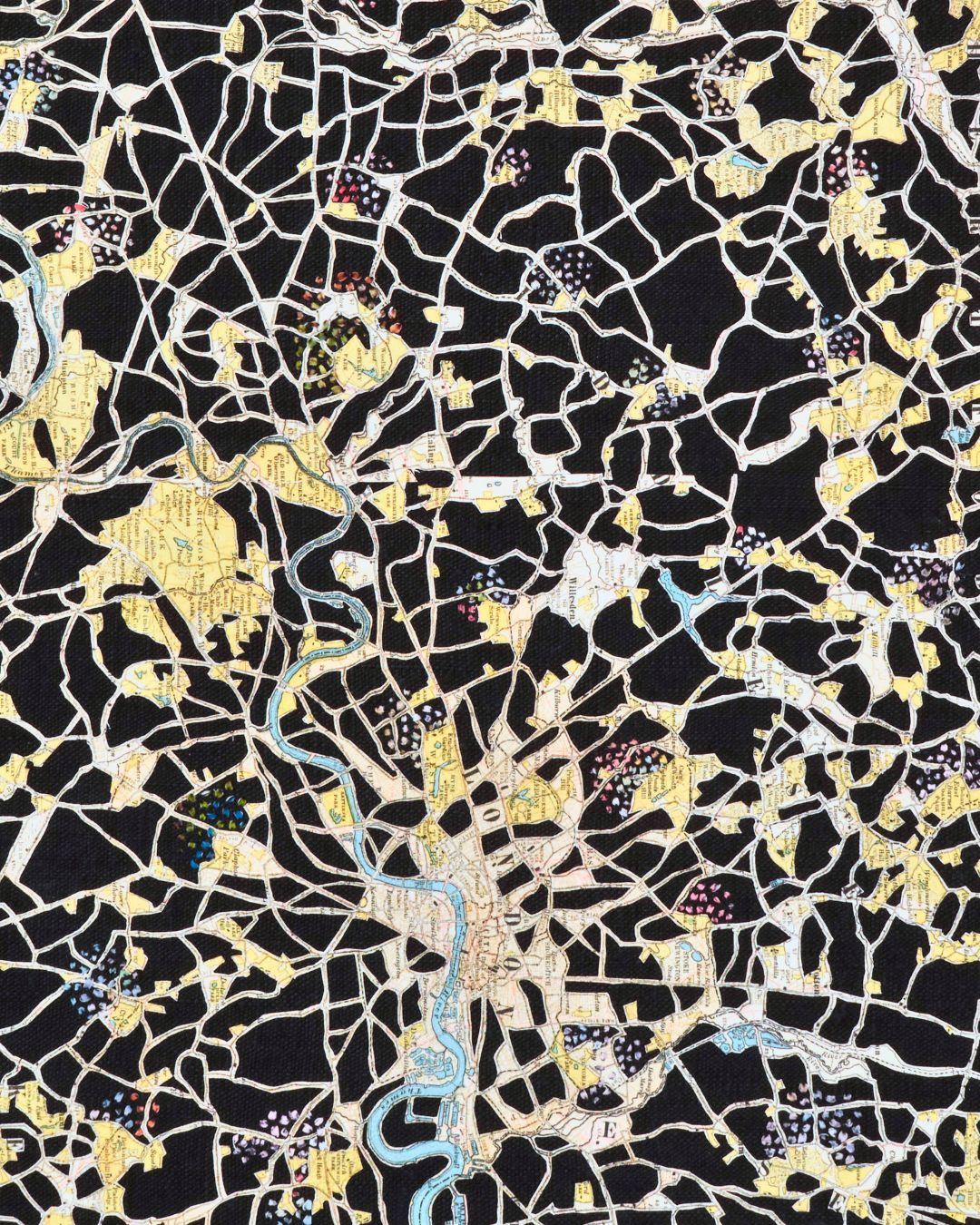
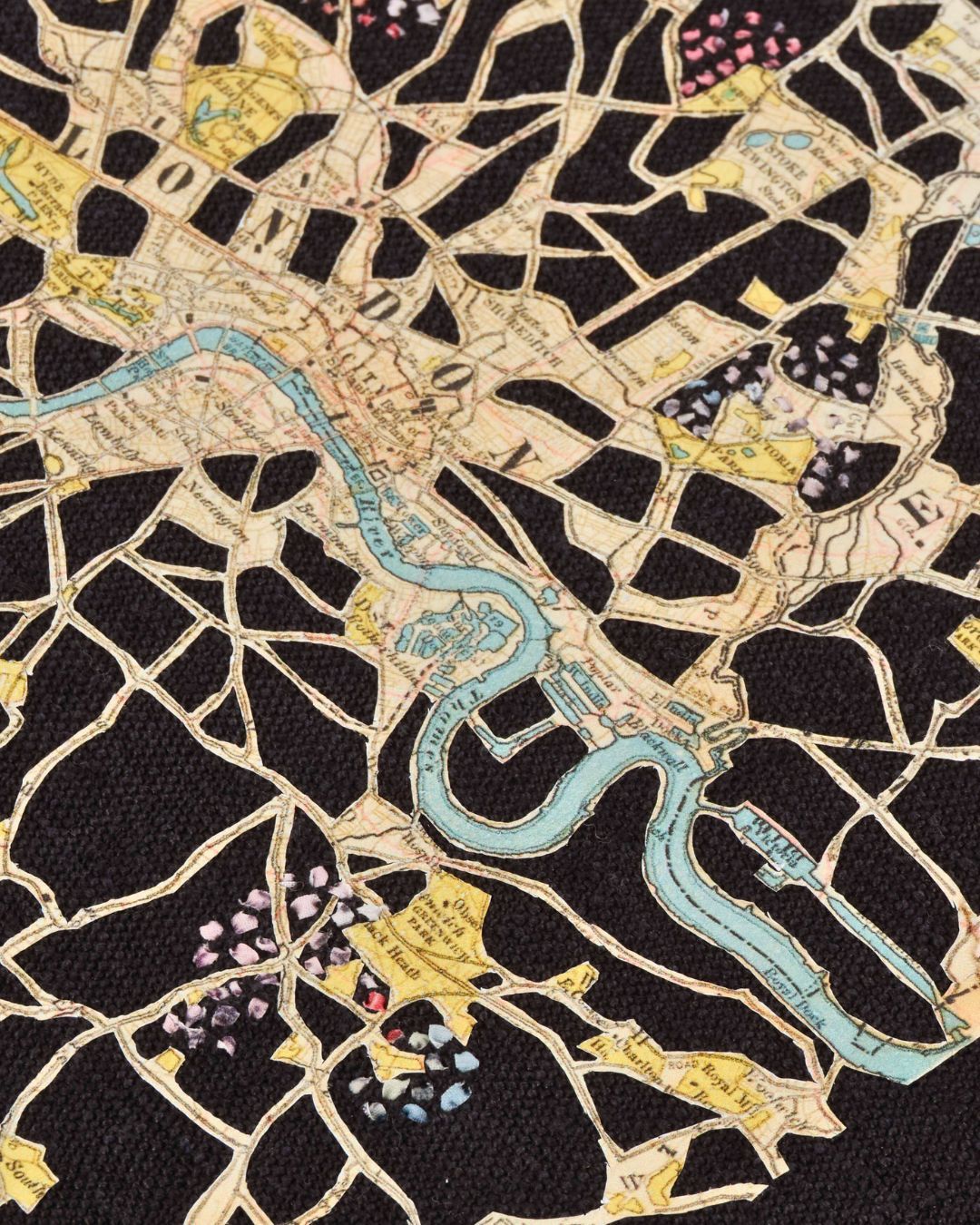
Reimagined landscapes
To rise. To flow. To set. To be. My work Reimagined Landscapes – Memories of Being is a mix of collected old maps of places we know, lived in, travelled to, were displaced from or longed for. I created a mélange of threads from collected old maps to render landscapes that are harmonious representations of coexistence, multiplicity and connectedness.
This work taps into the innocence of nature, as well as its being and interconnectedness. It’s inspired by nature’s cycles, day-to-day and seasonal.
The series is born out of the constant tussle to belong to a place or two and getting over the questions that arise when one sees landscapes: Where is that? Which place? Which country?
“I want viewers to see the landscapes as they are, without all the questions.”
Archana Pathak, Textile artist
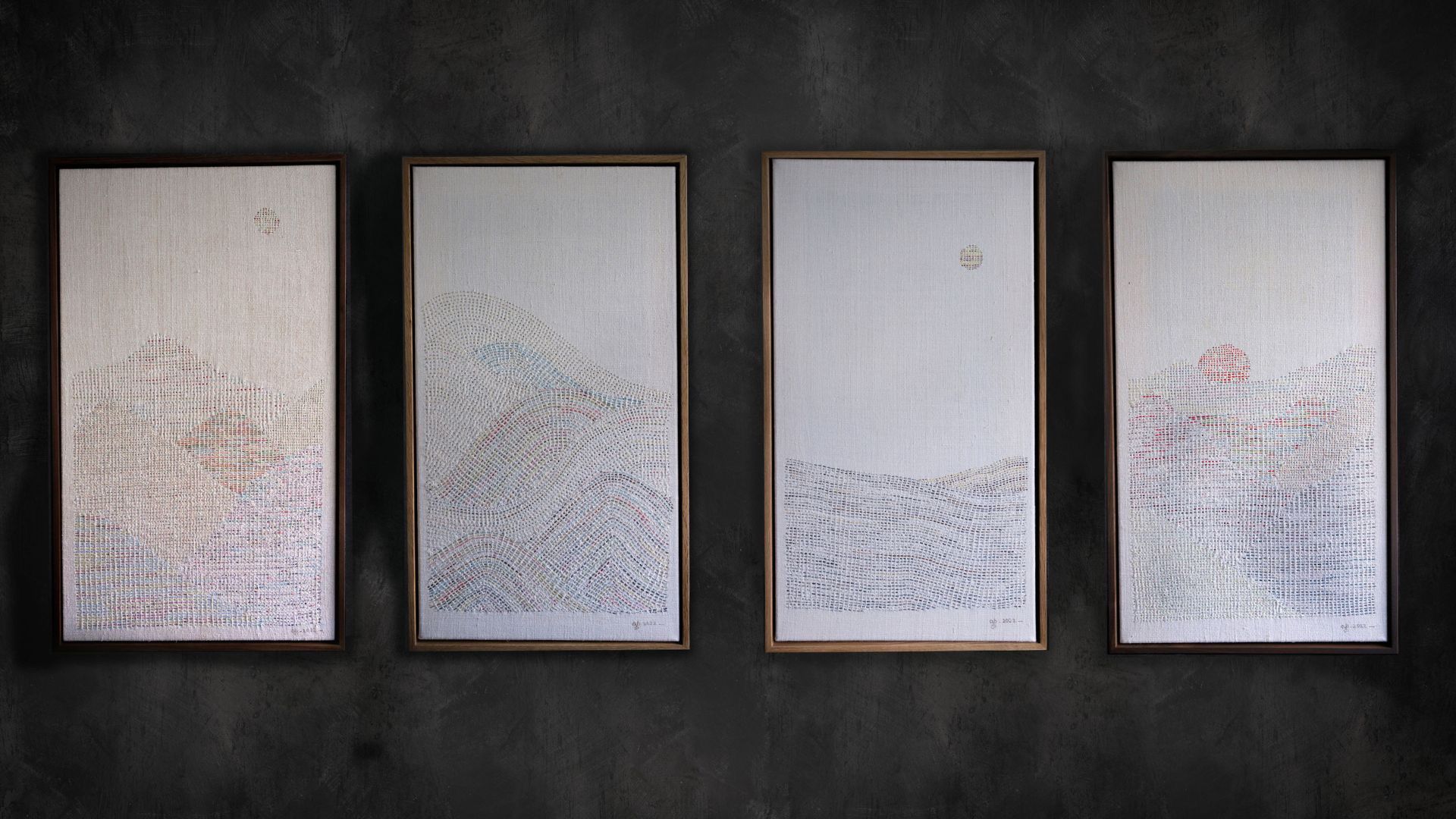
Beauty of transience
My Transient series is born out of nature’s ‘aha’ moments. It seeks to heighten awareness of the beauty of impermanence directly influenced by moments in nature.
My everyday commute to a green patch of woodland allowed me to witness the transience of seasons a bit more closely. For example, I was filled with energy and joy by the ephemeral beauty of early spring’s soft and supple new life. But there was also a bit of sadness knowing it was transitory and brief.
“I have deeply felt the ephemeral nature of things since we moved to our home close to a patch of woodland in London.”
Archana Pathak, Textile artist
The Transient series is also the first time I incorporated the colour black. Black represents seeing in darkness, moments of meditation and a colour of creation. I present that colour as a liminal space between two stages of existence – one dissolved in darkness and the other not yet known, heading toward light and life.
I used black linens and khadi cotton hand dyed in shades of black. The threads were again made from old maps.
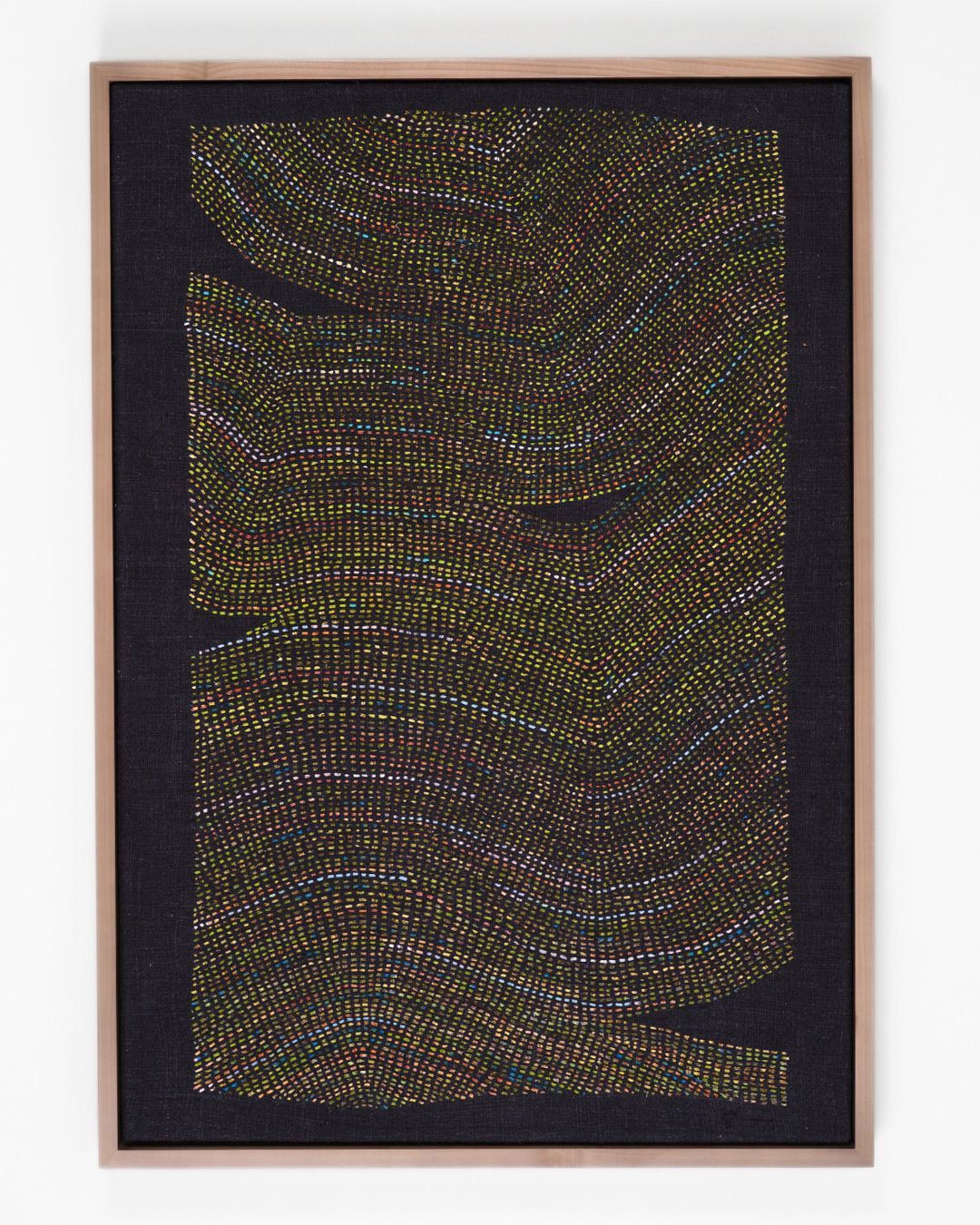
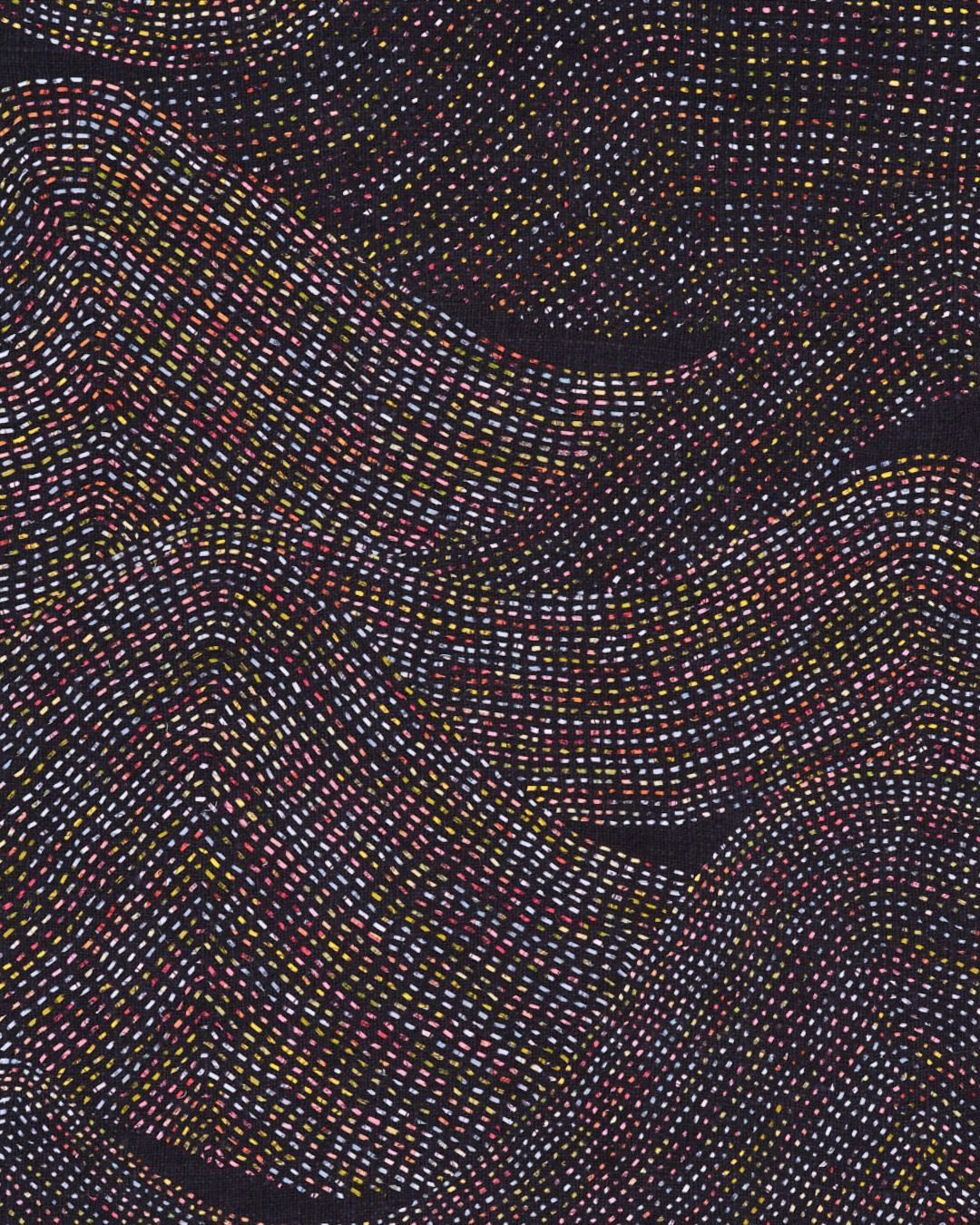
Like water
My connection with nature has led me to the fact it’s not something that is outside of us. We are part of nature and deeply interconnected. Water is a very beautiful metaphor for identity and its sublime transient nature. Our bodies are half water, and the fact the water I drink was once a cloud is striking.
The fluidity and transparency of water and its ability to become and unbecome is hugely inspiring and prompts meditation.
This series is ongoing and uses threads made from old maps to present different versions of flow. Like water, the map threads come from different places, helping me communicate our multiplicity, coexistence, harmony and oneness. Cloud becomes rain, rain becomes water, and water becomes rivers, lakes, ponds and puddles. Everything merges and becomes sea in a very linear way.
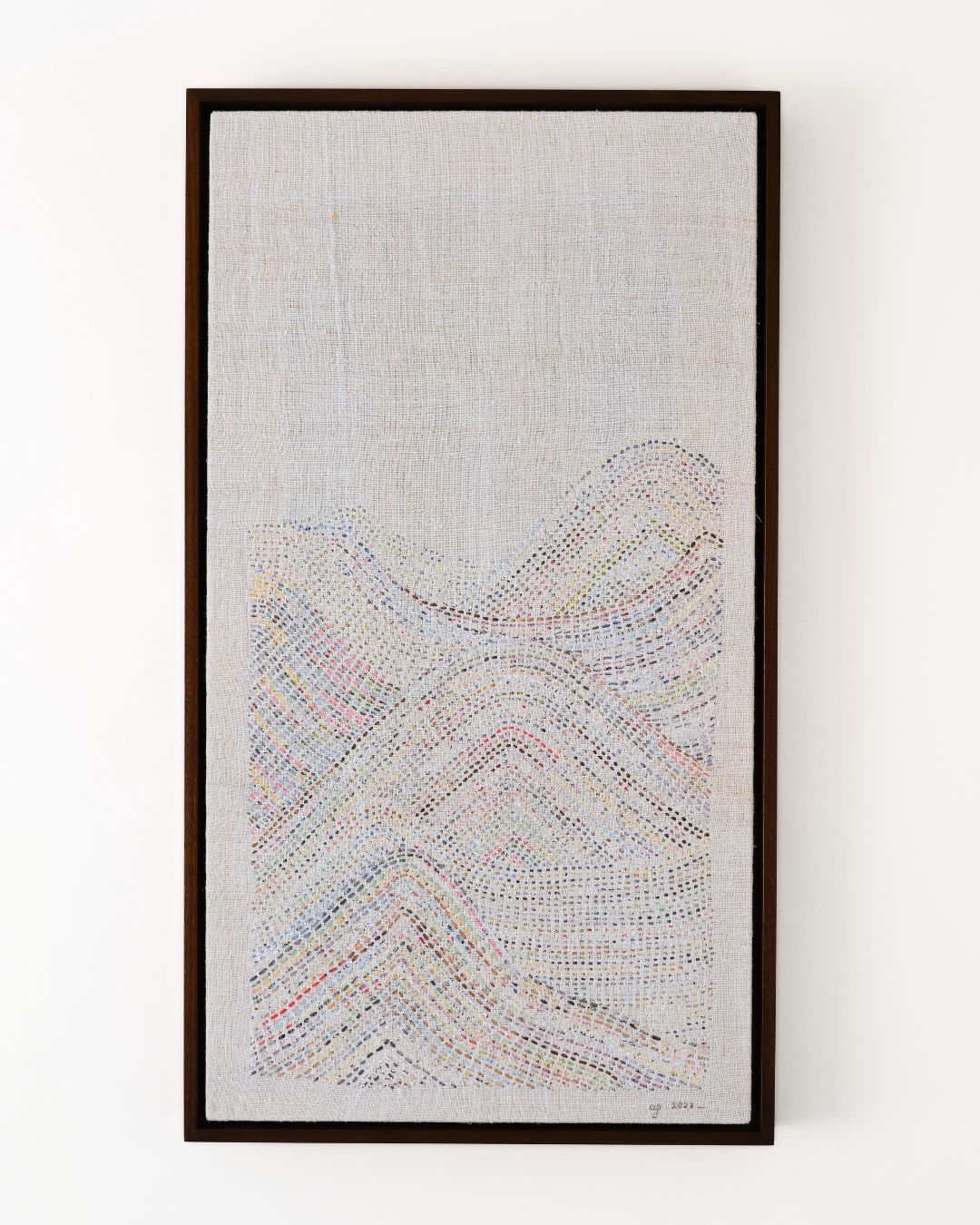
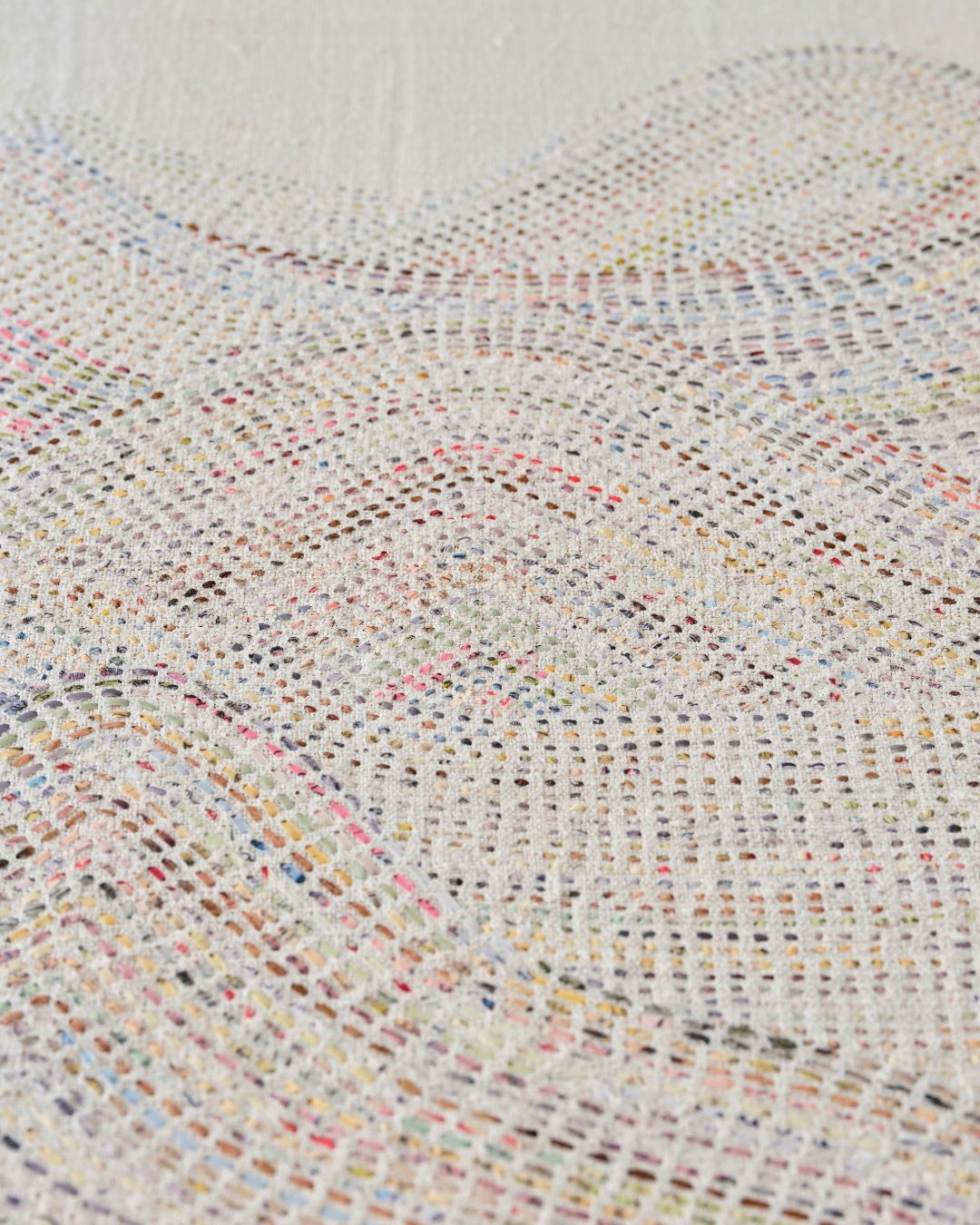
Creative process
I mostly work intuitively, but I do use a very modest sketchbook to record my thoughts and ideas.
I tend to write more than sketch. It’s like a logbook of my thought process, including anything that touches and inspires me in everyday living. It might be something someone said, a news item, an inspiring quote or a moment in nature.
I use my phone a lot to take nature photos, and I also use Instagram as my diary to record moments of inspiration and works in progress. It’s a record of my journey.
Once I settle on a found artefact, I scan it on a home scanner and convert it into an image. I use my inkjet printer to print that image onto heat transfer paper, which goes through my printer just like traditional paper.
I transfer the image onto fine cotton fabric with the help of a domestic iron. I use tightly woven cambric cotton, and I don’t wash my fabrics before the heat transfer process.
Lastly, I cut very fine threads with scissors. The heat transfer fabric tends to become like paper, so it’s easy to cut. I just use ordinary lightweight scissors. The fabric also doesn’t fray when I stitch.
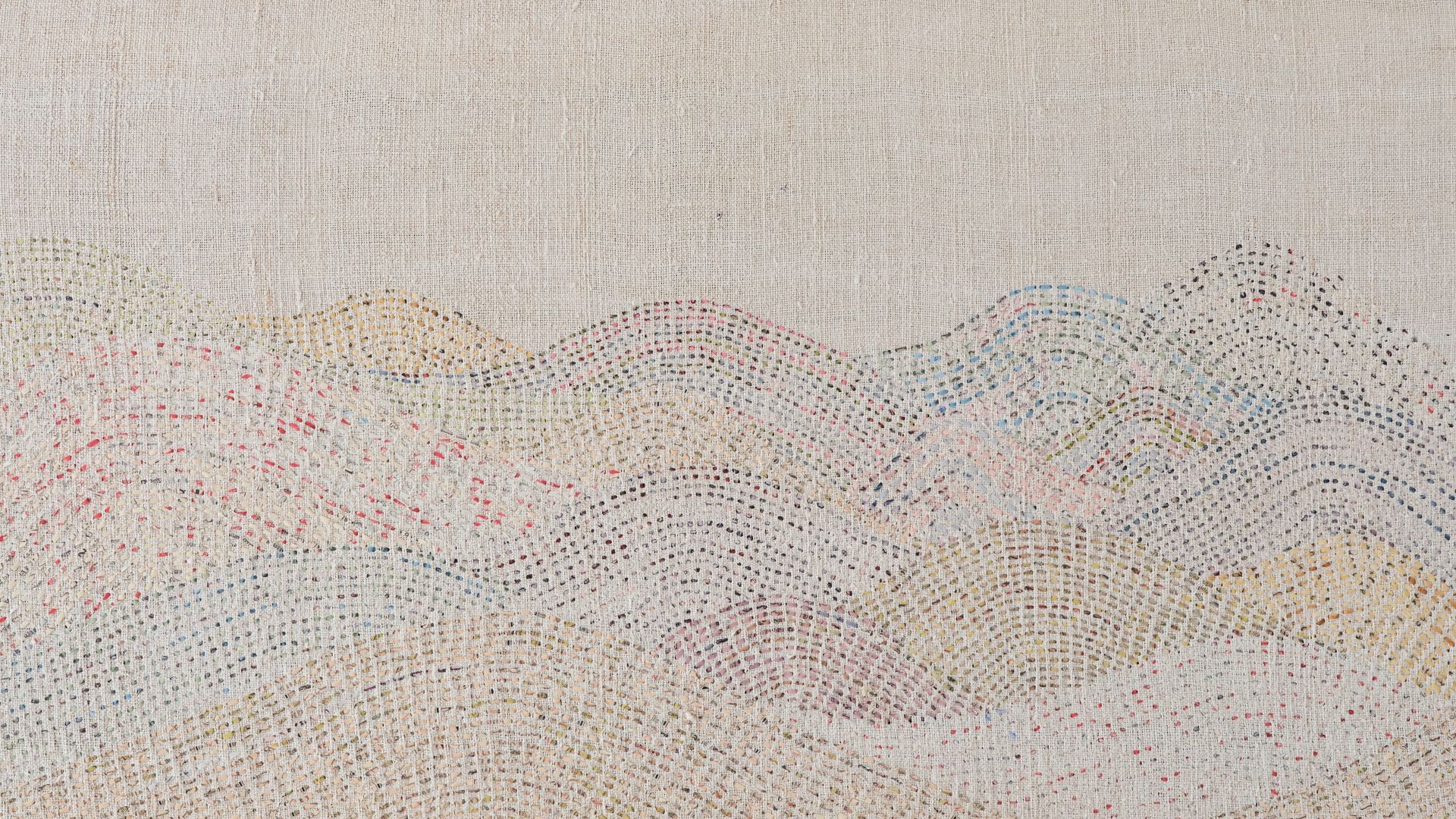
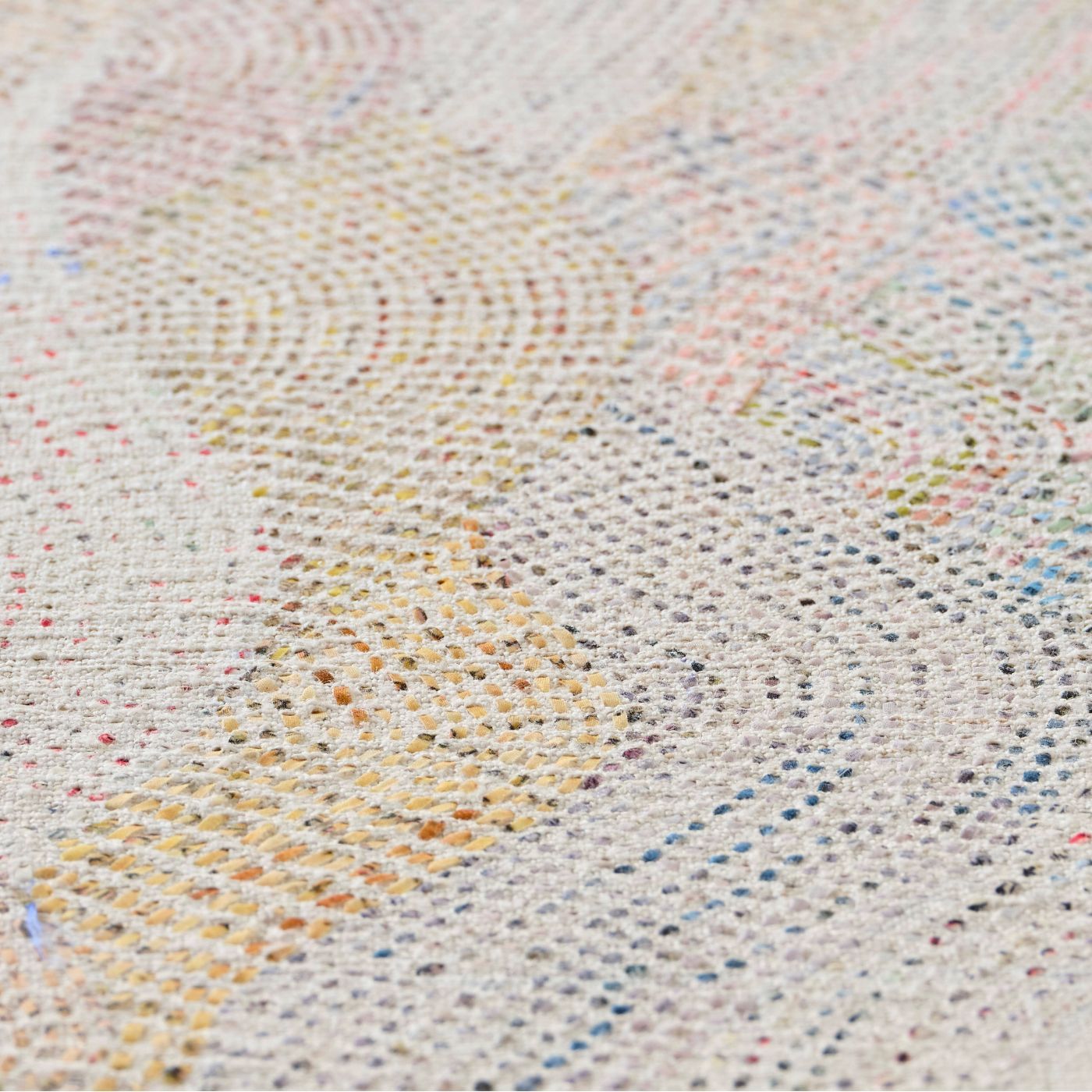
Creating fabric threads
I only stitch with my printed fabric threads. They serve as my painter’s palette.
I use a traditional hand sewing needle with a large eye, and my threads behave much like traditional embroidery threads. The only real difference is I sometimes need to turn my threads to make sure the printed side lies face up when pulled through the fabric.
When working on my UK masters degree, I explored memories using old family photographs. I wanted to somehow encapsulate the images through stitch.
For my first attempt, I stitched french knots using thread I created from an old photo image. I’m now realising how those knots connect to memory. In India, women used to tie knots on the end of their sarees to remind them of something they needed to remember at the end of the day.
I kept experimenting from there to discover the full potential of the heat transfer process I use today.
Deconstructing artefacts and using them as threads to create something new is a very personal and core artistic process.
The artefacts, imagery and ephemera provide the starting point for the most important material I use: my threads. Those threads allow me to reconstruct a new abstract image that flows from personal to political space and from physical to psychological realms.
“I find the process of deconstruction and reconstruction reflects the transient nature of identities.”
Archana Pathak, Textile artist
Simple stitches
It’s important to note that I don’t stitch for long hours. I take breaks between projects and, most importantly, I remember to look away often to give my eyes a rest.
Subconsciously, I’ve been in pursuit of simplicity and I am inspired by Gandhi’s values and essentialism. My practice is very quiet and inward looking. Mostly, I rely upon three stitches: running stitch, seed stitch and french knots.
Running stitch helps me stay with those values. It’s the most basic stitch, and its simplicity gives me immense freedom to go deeper in exploring through repetition.
I use knots sporadically in my works. I guess the running stitch represents ‘flow’ and ‘transience’, while knots represent occasional conclusions in the flow.
Quiet time
In my Stitch Club workshop I aim to share the joy and self-discovery that can happen through a meditative stitch practice. Members can create unique threads from a chosen photograph that is significant to them. Using a simple running stitch and adding variations by working in pattern, enables them to explore the possibilities of a repetitive stitching process.
I find that working with my hands and a bare minimum of tools in absolute silence is a meditative practice. It gives me the space to quiet down, listen deeply, to question and find answers.

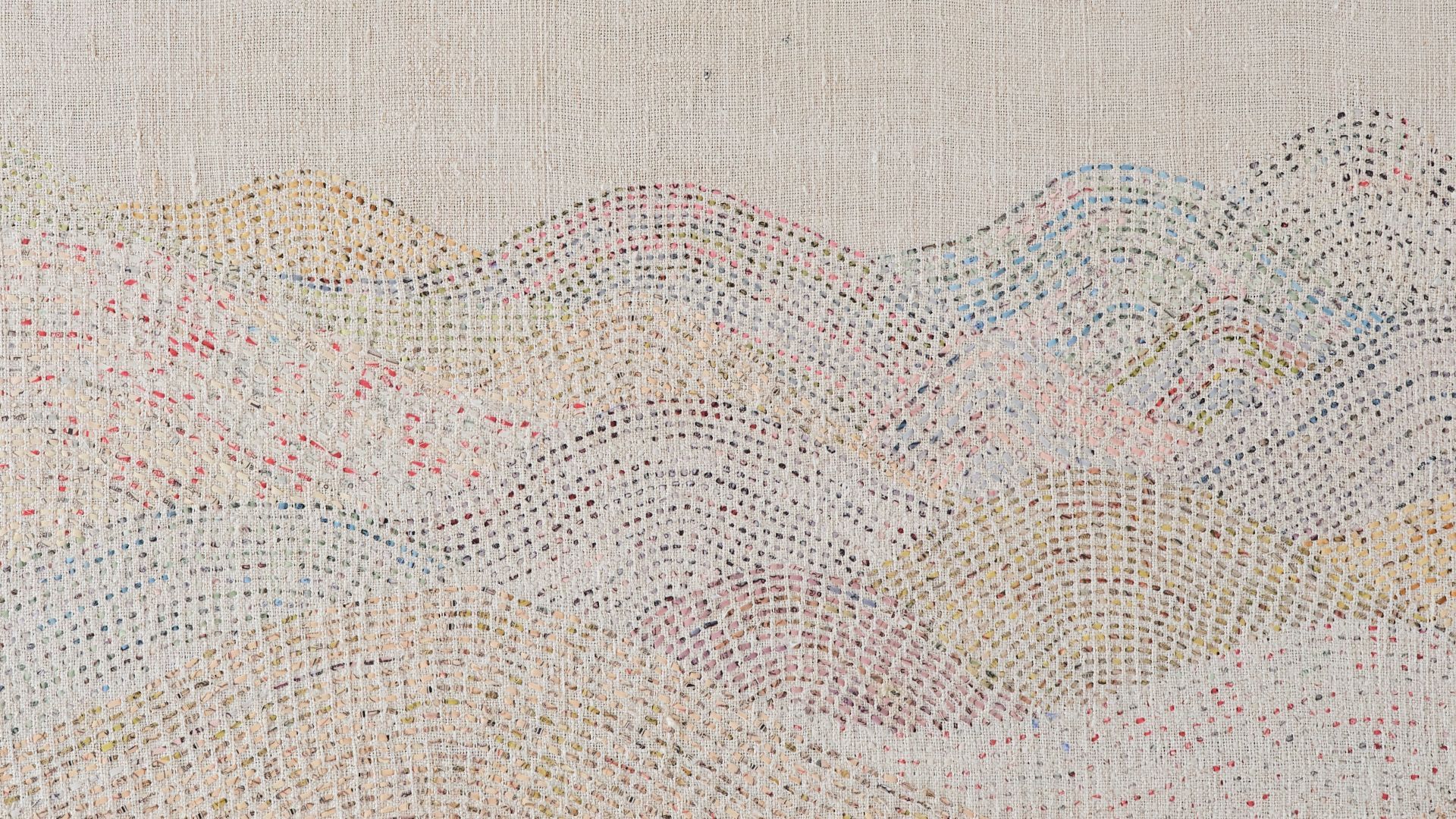

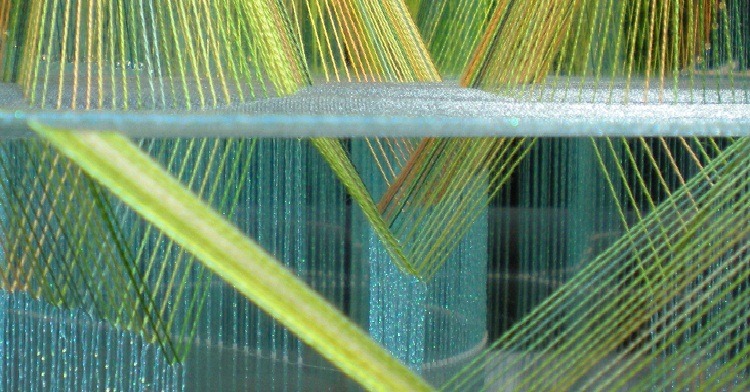
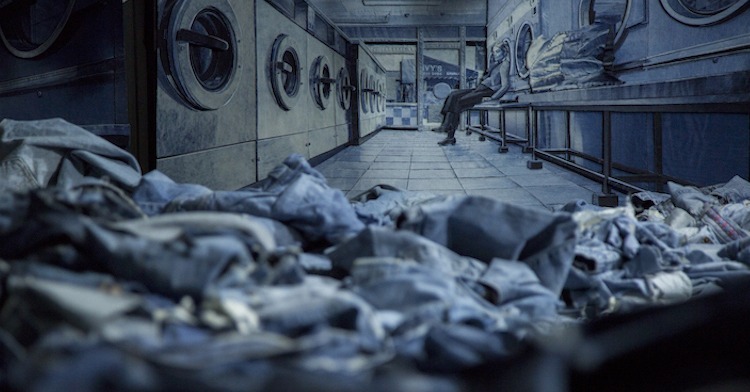
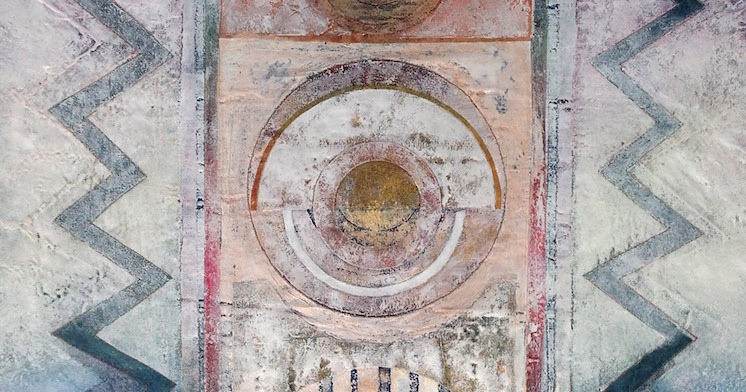
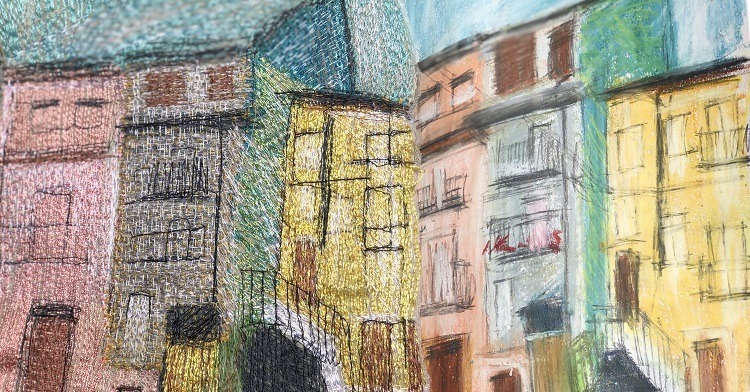
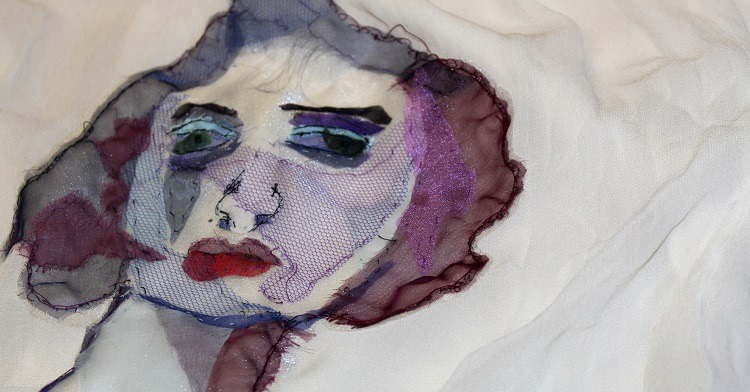
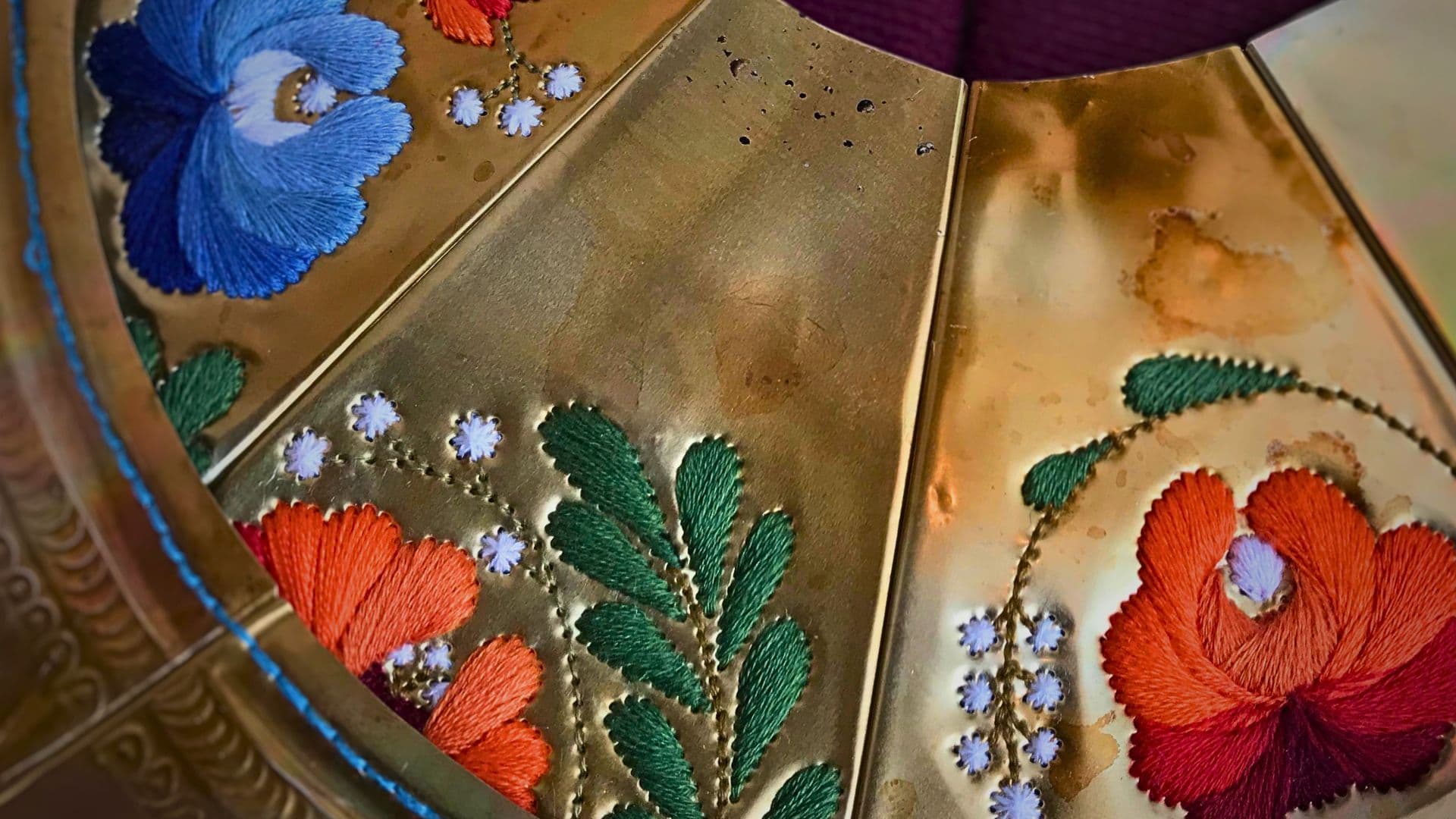
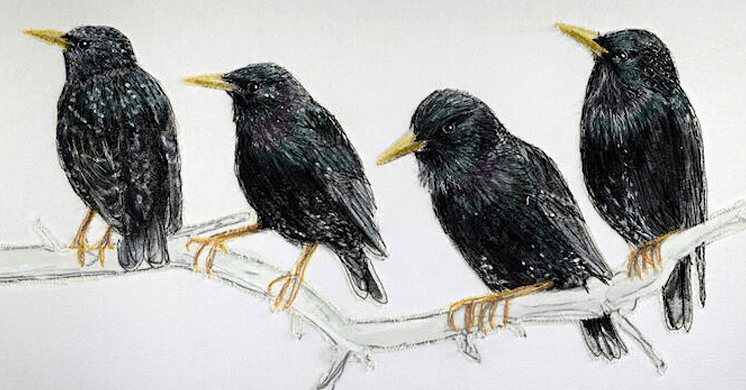
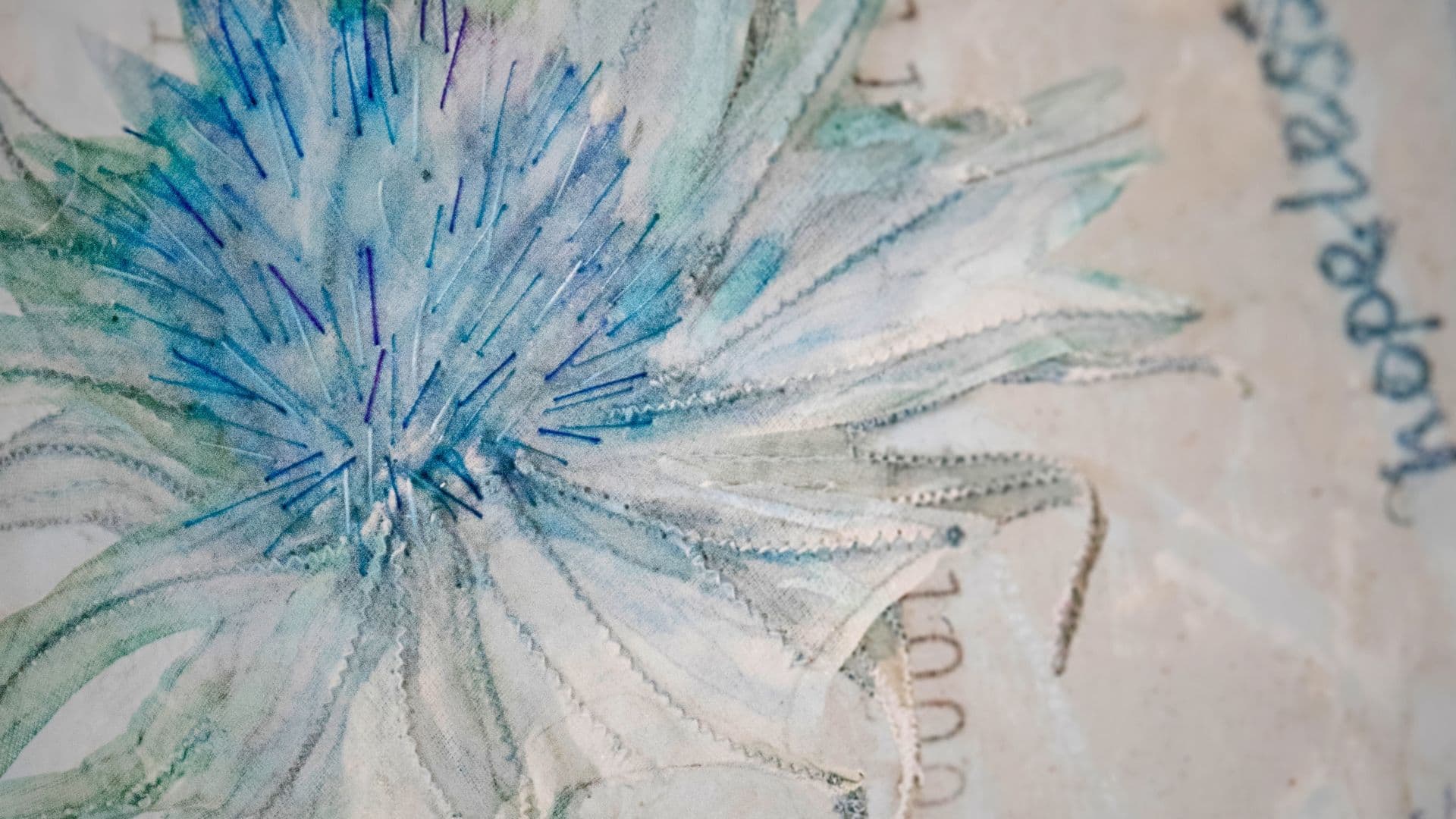
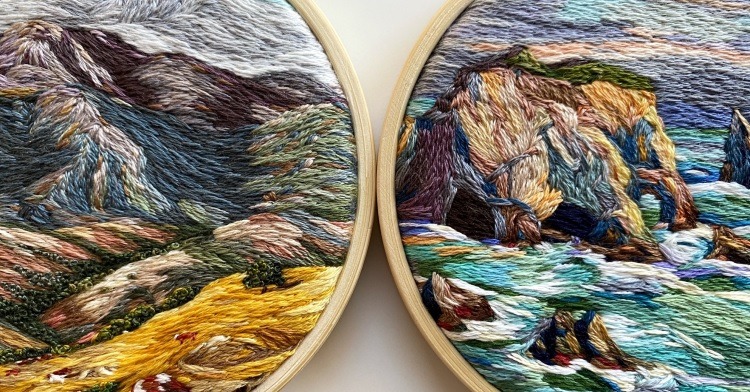
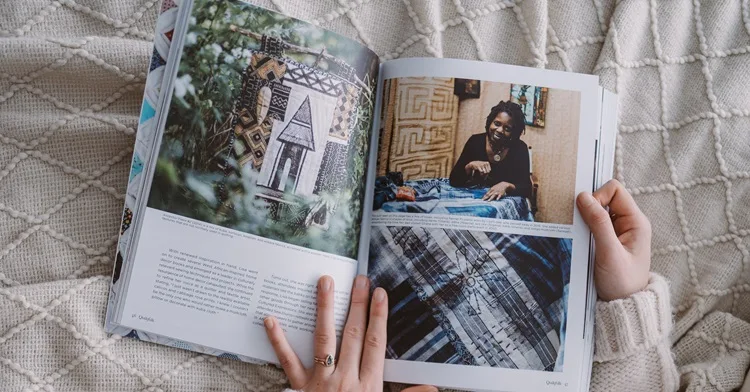
5 comments
Zohra Arastu
Archana’s article brought back beautiful memories of days spent at my maternal grand mother’s home, where all the aunties and cousins made art of different kinds. I grew up with a no waste concept thanks to my dear mother who taught me to sew at age 6 and I now indulge in all kinds of art especially fabric and thread. I enjoyed your art journey Archana.
Jose Williams
Thank you for showcasing such an innovative artist
Chandra Prakash Rai
Deep congratulations myself and my soul is filled with pride to go through your website.Have found the achievement in your Creative Arts earned until now
Congratulations beta
Lynda
This was so interesting never thought of using fabric strips as thread. just loved this technique.
Kathy
I found this article really moving. Her work is wonderful, that description doesn’t do it justice either. it’s quite unique I haven’t seen anything like before. Inspirational and I love seeing a photo of the artist too it crewates another connection. I really enjoy the newsletter thank you for spending time to create it and send it.